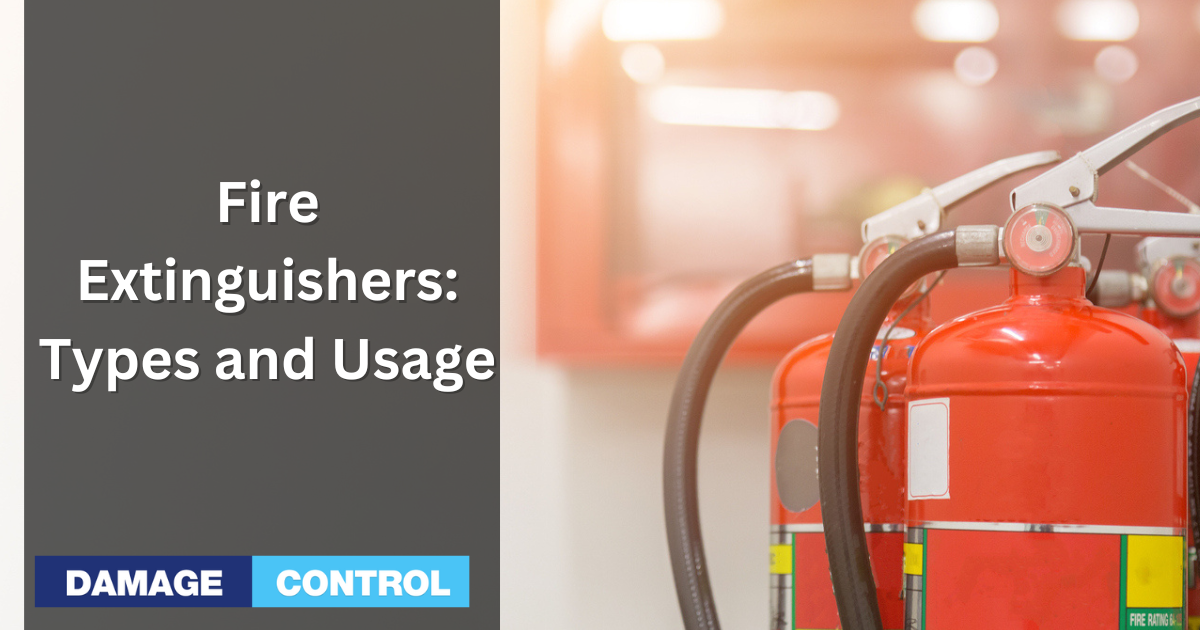In this guide, you'll learn everything you need to know about fire extinguishers. We'll talk about everything from their early history to the modern chemicals and propellants that have made them safer, more effective, and advanced than early inventors could have possibly imagined.
Who Invented The Fire Extinguisher?
Ambrose Godfrey, who was a trailblazer in chemistry at the time, patented the first known fire extinguisher in England in the year 1723.
It was actually known as a glass fire grenade.
What's most incredible is that he was smart enough at that time to actually put out fires by using a black powder explosion to distribute the fire-extinguishing liquid on the fire. From that time forward, people have been coming up with new chemicals and methods to extinguish fires with handheld devices.
Note: All data presented in this guide is based on US laws and standards. Other countries have different standards. Check yours for your country if not in the United States of America.
How Does A Fire Extinguisher Work?
Fire extinguishers work by inhibiting the chemical reaction of fires with sources of energy like wood, petroleum products, metal-based combustibles, kitchen fires, and electrical fires.
This is done by removing oxygen, therefore stopping the chemical reactions that cause the fire, cooling the affected medium (source of energy) to a temperature below its flash point, or both. There are many methods used to accomplish these goals. We will cover most of them here in this guide.
To start, we need to know what fire extinguishers are made of.
Most are made of metal cylinders that are sealed with some kind of fire inhibitor known as an “agent” and pressure to push the agent into the target area of a fire. There are two basic types of fire extinguishers.
1. Stored pressure. This means the interior of the cylinder holds both pressured gases or air to force the agent out, whether dry or wet.
2. Cartridge operated. This means the propellant is in a cartridge and the agent is in the cylinder by itself. The propellant could be a chemical reaction to the agent that causes the pressure needed.
Are Fire Extinguishers Toxic?
The simple answer is no. But, some or most of the agents used do cause irritation to the respiratory system and eyes if you get in a cloud of them, but no lasting harm or damage should be expected.
Most of it tastes bad to say the least, but it's better than burning to death in a fire you could have escaped.
How To Use A Fire Extinguisher
Using a fire extinguisher is fairly simple. Remove the safety pin by simply pulling it out by the attached ring, point the nozzle, and squeeze the trigger handle. Aim at the base of the fire with a side to side sweeping motion.
Warning!
Fire extinguishers in your home can only do so much. The basic rule of thumb for household use is if the flames of the fire are hitting the ceiling, it's time to get out and let the professionals handle it. You can replace things, but not lives.
Get out if flames touch the ceiling.
What Are The Classes of Fire Extinguishers
There are 5 basic classes of fire extinguishers in the United States. They are class A. B, C, D and K. Some fire extinguishers have the ability to crossover into to multiple classes historically. The ABC fire extinguisher is one example.
Water Fire Extinguishers
Fire extinguishers that use water to extinguish fires have the benefit of cooling the fuel source on contact, keeping it from reattaining its flash point. They work well on organic materials like wood, paper, fabrics, furniture and many other things commonly found in U.S. homes. Never use a water extinguisher on any electrical fire.
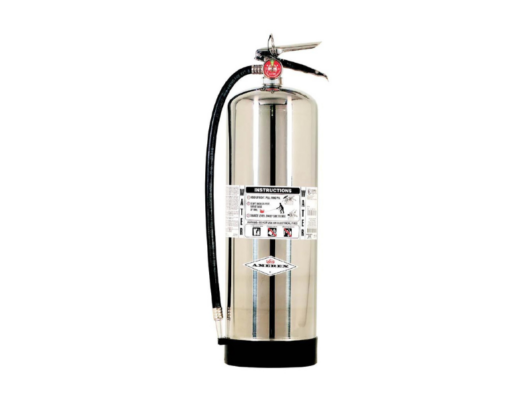
AFFF Foam Fire Extinguishers
AFFF, or Aqueous film-forming foam is a type of fire extinguisher that can smother, cool the burning medium and remove oxygen to starve the fire, all at the same time. AFF produced a film that rolls out across any surface before the foam blanket is produced. This smothers the fire by blocking oxygen.
The versatility is incredible because it is also used in conjunction with Purple K dry chemicals to make it even more effective, covering more classes of fires. This is the foam that is used at airports. Yeah… it's that good, but for its intended purposes and applications.
This does not include compressed air foam system (CAFS), which is an older version of the AFFF systems.
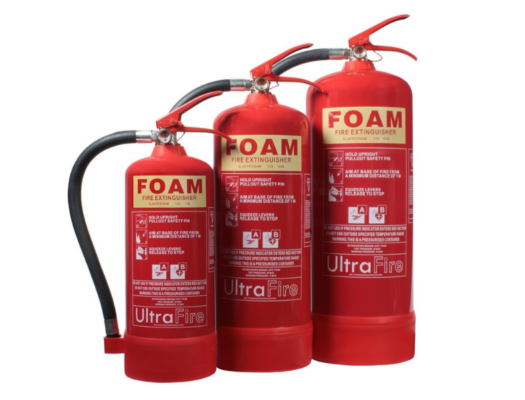
Carbon Dioxide (CO2) Fire Extinguishers
Carbon dioxide fire extinguishers are considered “clean agent” fire extinguishers because the gas is inert, leaves no caustic residue, and does no harm to equipment, humans, furniture, aircraft, ships, and much more. There are other inert/gas based fire extinguishers. Here are a few.
- Halon
- Halocarbon
- Novec 1230 fluid, which is known as “dry water”
- Potassium aerosol particle-generator – Interesting, but not for home use.
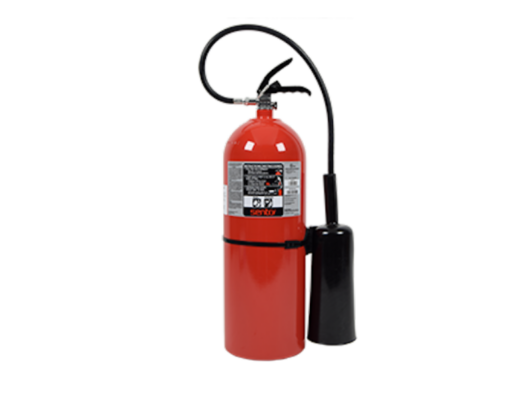
ABC Powder Fire Extinguishers
You hear about ABC all the time, it's the most commonly known of all fire extinguishers in the United States. It's nothing more than a fire extinguisher that fits into 3 fire fighting categories as seen above.
Many people will tell you an ABC fire extinguisher is OK for kitchen use, but that's no longer true. What you are looking for is a Purple-K fire extinguisher.
It's been proven more effective, safer and reduced the probability of the pressure from an ABC extinguishers pressure from blowing out hot grease, spreading the fire in most cases. The Purple-K system is lower pressure and covers it all with foam that smothers and cools it quickly.
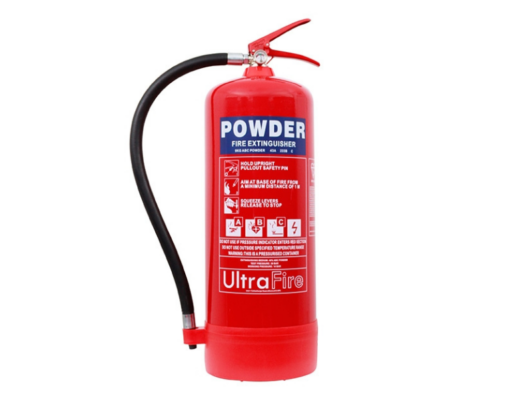
Water Mist Fire Extinguishers
Science is amazing. This system makes having a water based fire extinguisher safer in case you need one for an emergency and inadvertently hit some electrical components.
The fine mist gives more surface area to cool the fire and medium on fire, but it's also filled with distilled water, and it's not very prone to conducting electricity. This is a major win for water based fire extinguishers.
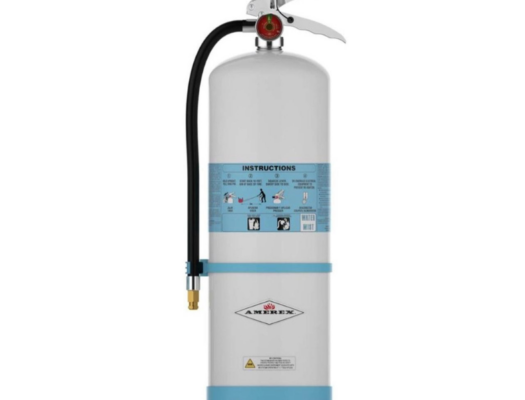
Wet Chemical Fire Extinguishers
Wet chemical (potassium acetate, potassium carbonate, or potassium citrate) extinguishers put out fires by creating a soapy (salt), thick foam that smothers fires by denying the fuel access to oxygen. It is effective because of a process called saponification. It's the same process used to make soap. Fats and lye combined are a prime example of the process of saponification.
Older models of these were considered as ABC or multi-category fire extinguishers because some put out up to three categories of fires safely.
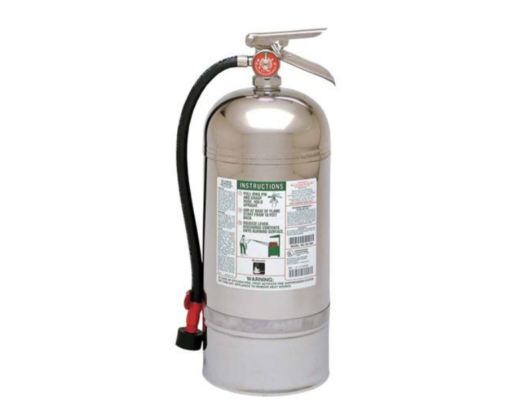
How Much Is A Fire Extinguisher?
They start around 20 bucks for the lower cost disposables, but can range up into several hundred dollars each depending on your needs and its placement if it's not commercial. Systems or cart system fire extinguishers can run into several thousands of dollars each and are not for home use. They are more commercial, industrial, military, or aircraft related.
Most of your home types of fire extinguishers are under 300 bucks, even for the larger and more specialized models. The average is likely around 60 bucks each for the average homeowner. If you want exceptional quality and a tank that will last multiple inspections/refills, you'll shell out more dollars.
Specific kinds have different prices. Let's play with some examples on Amazon.
Here is a category A fire extinguisher for 10 to 25 bucks. They are generally smaller, which means small fires or just buying time to escape the home/building.
Then you can move up to 5 lbs and add in A, B and C classes into one and only pay 40 to 80 bucks for them. These are much better suited to home and yard types of fires.
Although an ABC is classified as something that used to be acceptable for kitchen fires, or grease fires, but now you need a Purple K fire extinguisher. It's the one fire extinguisher every home should have. We recommend the 5-Lb Purple K for kitchen use. It's a bit more expensive than your smaller extinguishers, but with a hot grease fire in your kitchen, do you really want to run short and lose your entire home? Here is an example of the Purple K fire extinguisher.
Where To Buy A Fire Extinguisher?
There are many places you can buy fire extinguishers including Home Depot, Lowes, Amazon, some local fire departments, hardware stores and related vendors. The options are endless online. In today's world, there is no shortage of options since there are also designer extinguishers as seen on Houzz.
How Long Do Fire Extinguishers Last?
It varies depending on the quality and build of the cylinder, the types of chemicals or fire agent used and how they do at each inspection.
How Often Should Fire Extinguishers Be Inspected?
Other than a type A extinguisher, the chemicals used in them are caustic to some degree. This is one of several reasons your fire extinguishers should be inspected once a year. This is enforced for commercial and industrial use, but not for home/personal use, although it would be wise to follow the schedule. You never know when you'll need your extinguisher and finding out you skipped an inspection that caused it to malfunction when your home is on fire will be a decision you'll regret the rest of your life.
Here is the US inspection schedule.
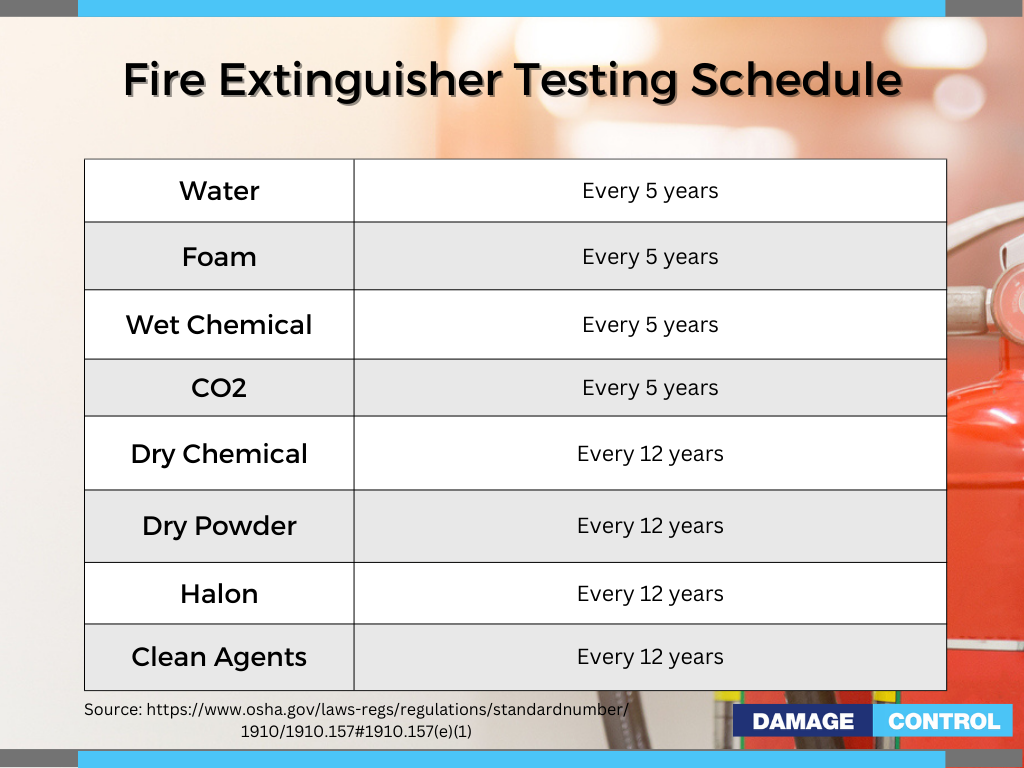
Where To Get A Fire Extinguisher Inspected
Contact your local fire department. They often inspect them, but if not, they can help you find the correct locations and services to accomplish this goal.
Where To Recharge A Fire Extinguisher
Again, you're likely to find the proper information to this question by calling your local fire department if you want it done locally, which is a wise move. The shipping cost to mail the cylinder to and from the refill location will eat you up in cost.
How To Dispose Of A Fire Extinguisher
Once again, your local fire department can help you sort this out locally.

